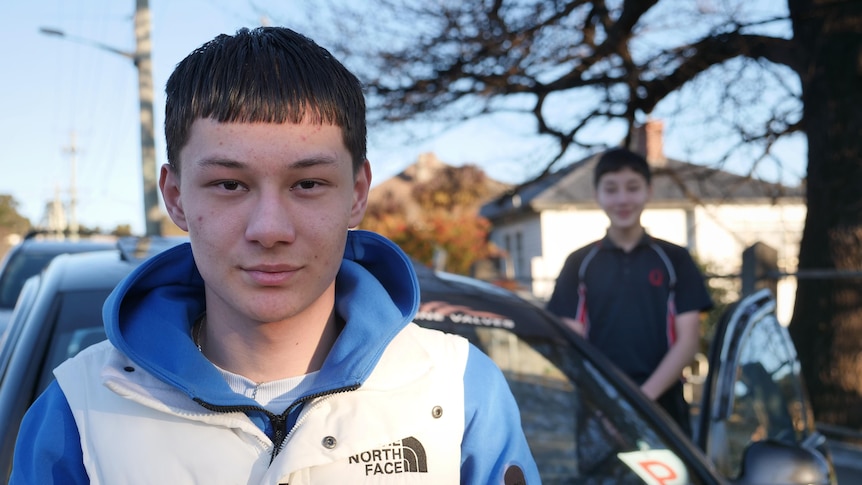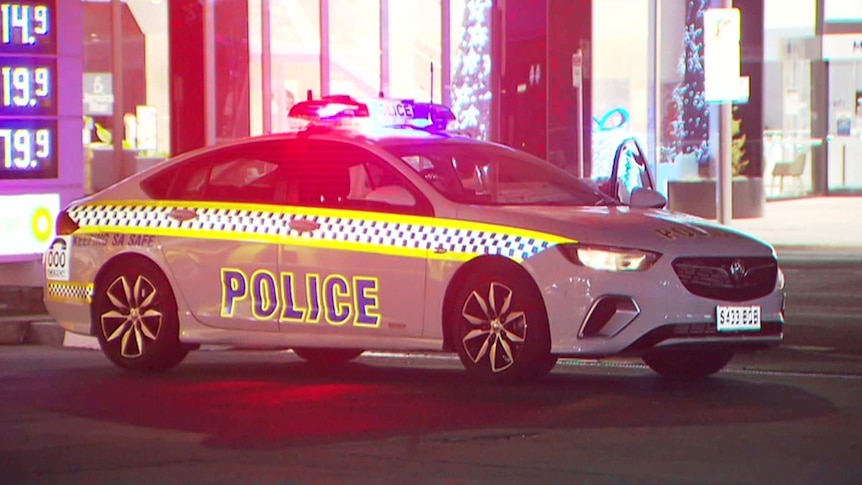When 18-year-old Afghan migrant Mehdi Safari from Launceston passed his driving test, he was “hopping around” with excitement.
It made it easier for him to travel to his part-time job at a local hardware store, and to school every day.
“Yo puedo [also] go out more with friends, and even when I’m going out to play sport, it’s very helpful to have a license,” he said.
It was also an important milestone for the Launceston Migrant Resource Center’s learner driver program, Drive4Life, as Mr Safari was its 500th participant to pass the P-test.
Coordinator Janice Molineux said it was incredibly significant for those migrants and refugees and their families.
“I was very happy… [and] now it’s 511 [people who have passed]. I just think it’s such a great thing,” she said.
license to independence
Arriving in Launceston with his family from the Iranian city of Ahvaz in 2013, Mr Safari said he was passionate about cars and wanted to become a mechanic or engineer since childhood.
“Growing up, I tried to buy toy cars and I’d disassemble them to try to work out how they worked,” he said.
But in Tasmania, once old enough to obtain a driver’s licence, Mr Safari found it a challenge to accrue the required number of hours of practice as a learner driver.
“It was difficult for me to find a car to practise,” he said.
A car provided by the Drive4Life program allowed him to gain the supervised driving practice and skills he needed to get his P-plates.
Odds stacked high
In many ways, Mr Safari and the 510 other migrants who have now passed through Drive4Life have beaten the odds in obtaining a licence, according to Ms Molineux.
“One challenge… is knowing someone with a full driver’s license to help them gain the required hours to sit for their P-test,” Ms Molineux said.
Another is knowing enough English to pass.
Ms Molineux said some learners who were capable drivers were not able to gain their Ps due to interpreters not being allowed in the car with them during tests.
That restriction was introduced during the COVID-19 pandemic, and Ms Molineux said her organization was working on a proposal to address it.
“We are hopeful that people who are still learning English can acquire their licences. It should not be ‘English first, then a license’,” she said.
“Safety must always come first… [but] you don’t need perfect English to be able to drive.”
Ms Molineux said being able to drive was life-changing for many migrants and refugees living in Tasmania.
“A license lets them gain independence, get to English classes and travel to work where public transport options are not viable,” she said.
Bring your own tutor
Launceston’s Migrant Resource Center started its Drive4Life program in 2009.
The program operates with around ten volunteer driving tutors providing lessons in two dual-controlled cars. The 500 drivers it has helped to gain a license have come from countries ranging from Afghanistan to Sudan.
But the program’s success means it now has a long list of learner drivers waiting to join it, and not enough driving tutors to keep up.
Ms Molineux said it was due to the “battle” of finding driving tutors, particularly bi-lingual ones, that she began a ‘Bring Your Own Mentor’ initiative last year.
“It doesn’t matter where you are on the [learner waiting] list, if you bring someone who’s happy to be inducted as a Drive4Life mentor, then they help you and someone else from the top of the list,” Ms Molineux said.
The volunteer tutors go through a driver induction, which involves “some theory, but mostly practice” in a dual-control car with the program’s head mentor.
It was through this initiative that Mr Safari successfully passed his Ps, after being tutored in a Drive4Life car by his father, Abbas.
“With him… teaching me it was alright, because we had that father-son bond and connection, so I was comfortable with him,” Mr Safari said.
“It made the learning experience a bit easier.”
Finally finding their legs
Abbas Safari has gone on to tutor his other son, 16-year-old Milad, and Farsi-speaking Launceston mother-of-nine, Shah Jafari.
He said he enjoyed teaching “very much”, and was motivated to volunteer by his desire to help people in Tasmania’s Afghan community get their license “so they can go on with their lives”.
“Not having a license is like having extra weight on your shoulders,” he said.
Abbas Safari is keen to keep tutoring into the future, and has inspired his older son to one day “definitely” do the same.
“I would like for everyone in the right age bracket to have their license,” Mehdi Safari said.
“Because I experienced that feeling when you get your license and… it’s like you finally find your legs, so you can travel everywhere.”
.


